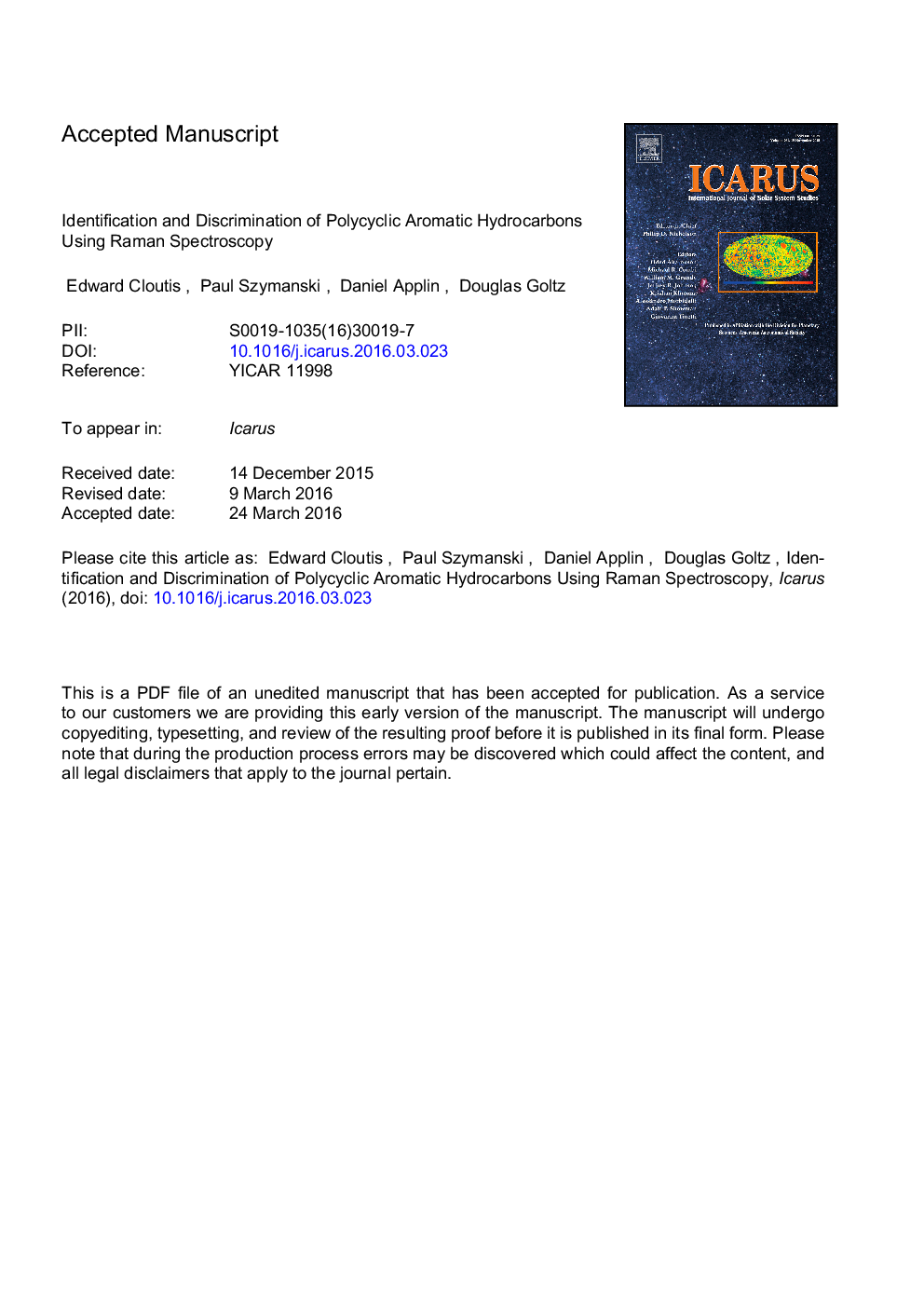| Article ID | Journal | Published Year | Pages | File Type |
|---|---|---|---|---|
| 8134970 | Icarus | 2016 | 79 Pages |
Abstract
Polycyclic aromatic hydrocarbons (PAHs) are widely present throughout the Solar System and beyond. They have been implicated as a contributor to unidentified infrared emission bands in the interstellar medium, comprise a substantial portion of the insoluble organic matter in carbonaceous chondrites, are expected stable components of organic matter on Mars, and are present in a wide range of terrestrial hydrocarbons and as components of biomolecules. However, PAH structures can be very complicated, making their identification challenging. Raman spectroscopy is known to be especially sensitive to the highly polarizable C-C and C=C bonds found in PAHs, and therefore, can be a powerful tool for PAH structural and compositional elucidation. This study examined Raman spectra of 48 different PAHs to determine the degree to which Raman spectroscopy could be used to uniquely identify different species, factors that control the positions of major Raman peaks, the degree to which induced fluorescence affects the intensity of Raman peaks, its usefulness for PAH discrimination, and the effects of varying excitation wavelength on some PAH Raman spectra. It was found that the arrangement and composition of phenyl (benzene) rings, and the type and position of functional groups can greatly affect fluorescence, positions and intensities of Raman peaks associated with the PAH backbone, and the introduction of new Raman peaks. Among the functional groups found on many of the PAHs that were analyzed, only a few Raman peaks corresponding to the molecular vibrations of these groups could be clearly distinguished. Comparison of the PAH Raman spectra that were acquired with both 532 and 785Â nm excitation found that the longer wavelength resulted in reduced fluorescence, consistent with previous studies.
Related Topics
Physical Sciences and Engineering
Earth and Planetary Sciences
Space and Planetary Science
Authors
Edward Cloutis, Paul Szymanski, Daniel Applin, Douglas Goltz,
